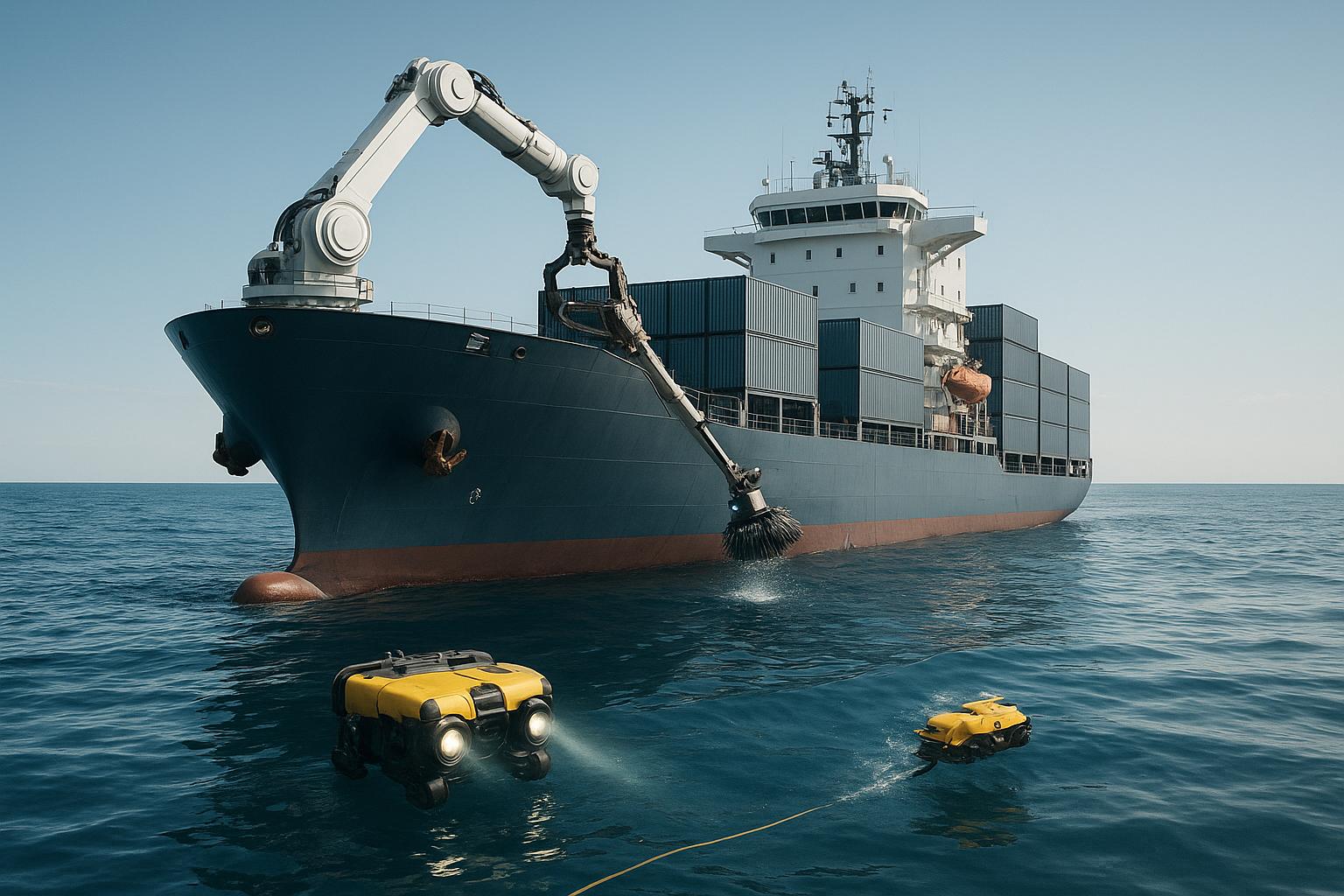
Maritime Robotics: Automated Systems for Ship Maintenance and Operations
When Robots Take to the Seas
What Are Maritime Robotics?
Underwater Inspection and Maintenance
Shipboard Maintenance Robots
Port and Terminal Automation
Real-World Applications
Benefits of Maritime Robotics
- Improved Safety: Robots can work in dangerous environments without putting human lives at risk. This includes underwater operations, confined spaces, and extreme weather conditions.
- Increased Efficiency: Robots can work faster and more accurately than humans, reducing the time required for maintenance and inspection tasks.
- Cost Reduction: While the initial investment in robotics can be high, the long-term cost savings from improved efficiency and reduced downtime can be significant.
- Better Quality: Robots can perform tasks with consistent quality, reducing the risk of human error and improving overall results.
- 24/7 Operations: Robots can work continuously without fatigue, allowing for round-the-clock operations and faster completion of tasks.
- Access to Difficult Areas: Robots can access areas that are impossible or dangerous for humans, such as deep underwater or in confined spaces.
Challenges and Limitations
The Future of Maritime Robotics
Career Opportunities in Maritime Robotics
Getting Started with Maritime Robotics
Frequently Asked Questions
The cost varies depending on the type and capabilities of the robot. Basic underwater robots can cost tens of thousands of dollars, while advanced systems can cost hundreds of thousands or even millions. However, the cost is often offset by improved efficiency and reduced downtime.
Modern maritime robots are designed to be highly reliable, with multiple backup systems and redundancy. However, like any technology, they can fail, and proper maintenance and training are essential for reliable operation.
Robots are more likely to augment human capabilities rather than replace them entirely. While some tasks may become automated, there will still be a need for human oversight, decision-making, and complex problem-solving. The industry will evolve, creating new opportunities for those who adapt.
Working with maritime robots requires a combination of technical skills (robotics, programming, electronics) and maritime knowledge (operations, safety, regulations). Strong problem-solving skills and the ability to work in challenging environments are also important.
Conclusion
Share This Article
Related Articles
Continue reading with these related articles

Maritime Drones and UAVs: How Unmanned Aircraft Are Changing Ship Operations
Discover how maritime drones and UAVs are revolutionizing ship operations. Learn about ship inspection drones, maritime surveillance, and unmanned aircraft in shipping.

Autonomous Ships: The Future of Unmanned Maritime Operations
Explore the future of autonomous ships and unmanned maritime operations. Learn about self-driving vessels, maritime automation, and the technology behind autonomous shipping.

Advanced Navigation Systems: GPS, AIS, and Next-Gen Maritime Navigation
Explore advanced maritime navigation systems including GPS, AIS, and next-generation navigation technology. Learn about ship navigation, maritime GPS, and modern navigation equipment.

Maritime Artificial Intelligence: AI Applications in Shipping and Port Operations
Discover how artificial intelligence is transforming maritime operations. Learn about AI applications in shipping, port management, predictive maintenance, and maritime automation.
© 2025 The Salty Mariner. All rights reserved.
